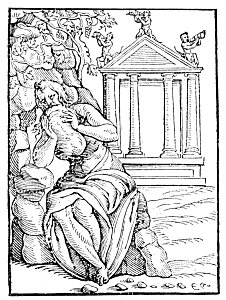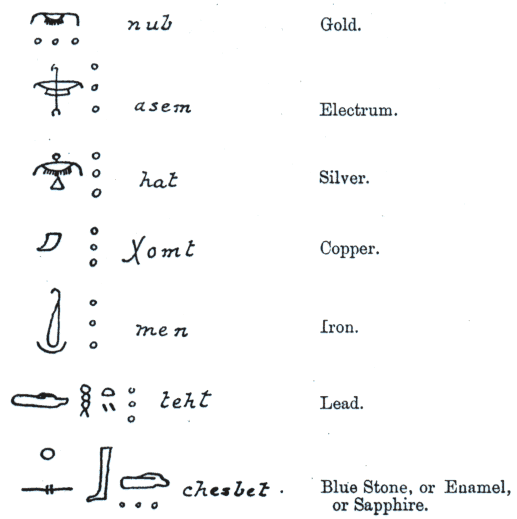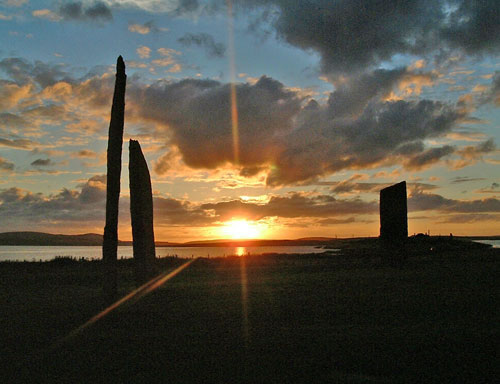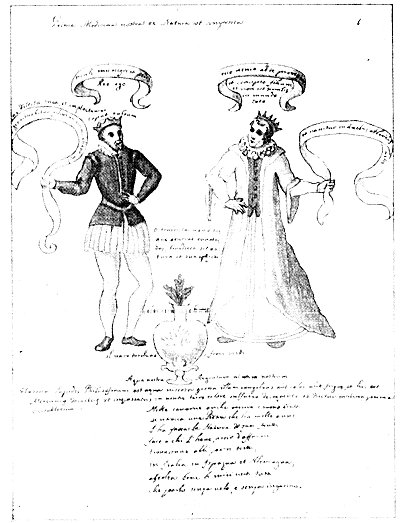Of particular interest are the rocking or logan stones, which evince the mechanical skill of these early peoples. These relics consist of enormous boulders poised upon one or two small points in such a manner that the slightest pressure will sway them, but the greatest effort is not sufficient to overthrow them. These were called living stones by the Greeks and Latins, the most famous one being the Gygorian stone in the Strait of Gibraltar. Though so perfectly balanced that it could be moved with the stalk of a daffodil, this rock could not be upset by the combined weight of many men. There is a legend that Hercules raised a rocking stone over the graves of the two sons of Boreas whom he had killed in combat. This stone was so delicately poised that it swayed back and forth with the wind, but no application of force could overturn it. A number of logan stones have been found in Britain, traces of one no longer standing having been discovered in Stonehenge. (See The Celtic Druids.) It is interesting to note that the green stones forming the inner ring of Stonehenge are believed to have been brought from Africa.
In many cases the monoliths are without carving or inscription, for they undoubtedly antedate both the use of tools and the art of writing. In some instances the stones have been trued into columns or obelisks, as in the runic monuments and the Hindu lingams and sakti stones; in other instances they are fashioned into rough likenesses of the human body, as in the Easter Island statues, or into the elaborately sculptured figures of the Central American Indians and the Khmers of Cambodia. The first rough-stone images can hardly be considered as effigies of any particular deity but rather as the crude effort of primitive man to portray in the enduring qualities of stone the procreative attributes of abstract Divinity. An instinctive recognition of the stability of Deity has persisted through all the intervening ages between primitive man and modem civilization. Ample proof of the survival of litholatry in the Christian faith is furnished by allusions to the rock of refuge, the rock upon which the church of Christ was to be founded, the corner stone which the builders rejected, Jacob’s stony pillow which he set up and anointed with oil, the sling stone of David, the rock Moriah upon which the altar of King Solomon’s Temple was erected, the white stone of Revelation, and the Rock of Ages.
Stones were highly venerated by prehistoric peoples primarily because of their usefulness. Jagged bits of stone were probably man’s first weapons; rocky cliffs and crags constituted his first fortifications, and from these vantage points he hurled loose boulders down upon marauders. In caverns or rude huts fashioned from slabs of rock the first humans protected themselves from the rigors of the elements. Stones were set up as markers and monuments to primitive achievement; they were also placed upon the graves of the dead, probably as a precautionary measure to prevent the depredations of wild beasts. During migrations, it was apparently customary for primitive peoples to carry about with them stones taken from their original habitat. As the homeland or birthplace of a race was considered sacred, these stones were emblematic of that universal regard shared by all nations for the place of their geniture. The discovery that fire could be produced by striking together two pieces of stone augmented man’s reverence for stones, but ultimately the hitherto unsuspected world of wonders opened by the newly discovered element of fire caused pyrolatry to supplant stone worship. The dark, cold Father–stone–gave birth out of itself to the bright, glowing Son-fire; and the newly born flame, by displacing its parent, became the most impressive and mysterious of all religio-philosophic symbols, widespread and enduring through the ages.
SATURN SWALLOWING THE STONE SUBSTITUTED FOR JUPITER.
From Catrari’s Imagini degli Dei degli Antichi. Saturn, having been warned by his parents that one of his own children would dethrone him, devoured each child at birth. At last Rhea, his wife, in order to save Jupiter, her sixth child substituted for him a rock enveloped in swaddling clothes–which Saturn, ignorant of the deception practiced upon him, immediately swallowed. Jupiter was concealed on the island of Crete until he attained manhood, when he forced his father to disgorge the five children he had eaten. The stone swallowed by Saturn in lieu of his youngest son was placed by Jupiter at Delphi, where it was held in great veneration and was daily anointed.

Moe is the founder of GnosticWarrior.com. He is a father, husband, author, martial arts black belt, and an expert in Gnosticism, the occult, and esotericism.




![How the South Saxons received Eadbert and Eolla, and the West Saxons, Daniel and Aldhelm, for their bishops; and of the writings of the same Aldhelm [705 A.D.] | Book 5 | Chapter 17 How the South Saxons received Eadbert and Eolla, and the West Saxons, Daniel and Aldhelm, for their bishops; and of the writings of the same Aldhelm [705 A.D.] | Book 5 | Chapter 17](https://www.gnosticwarrior.com/wp-content/plugins/contextual-related-posts/default.png)
